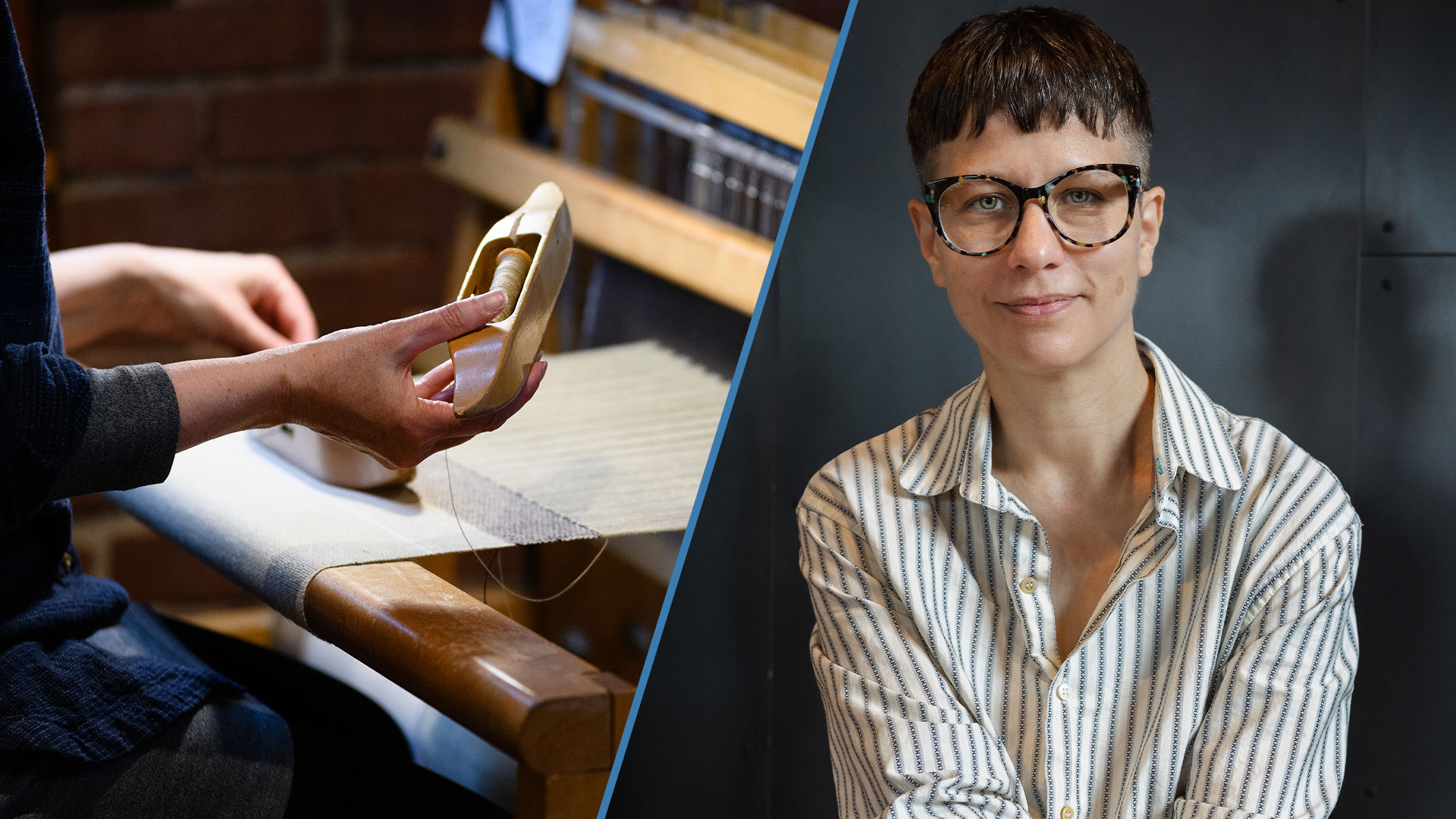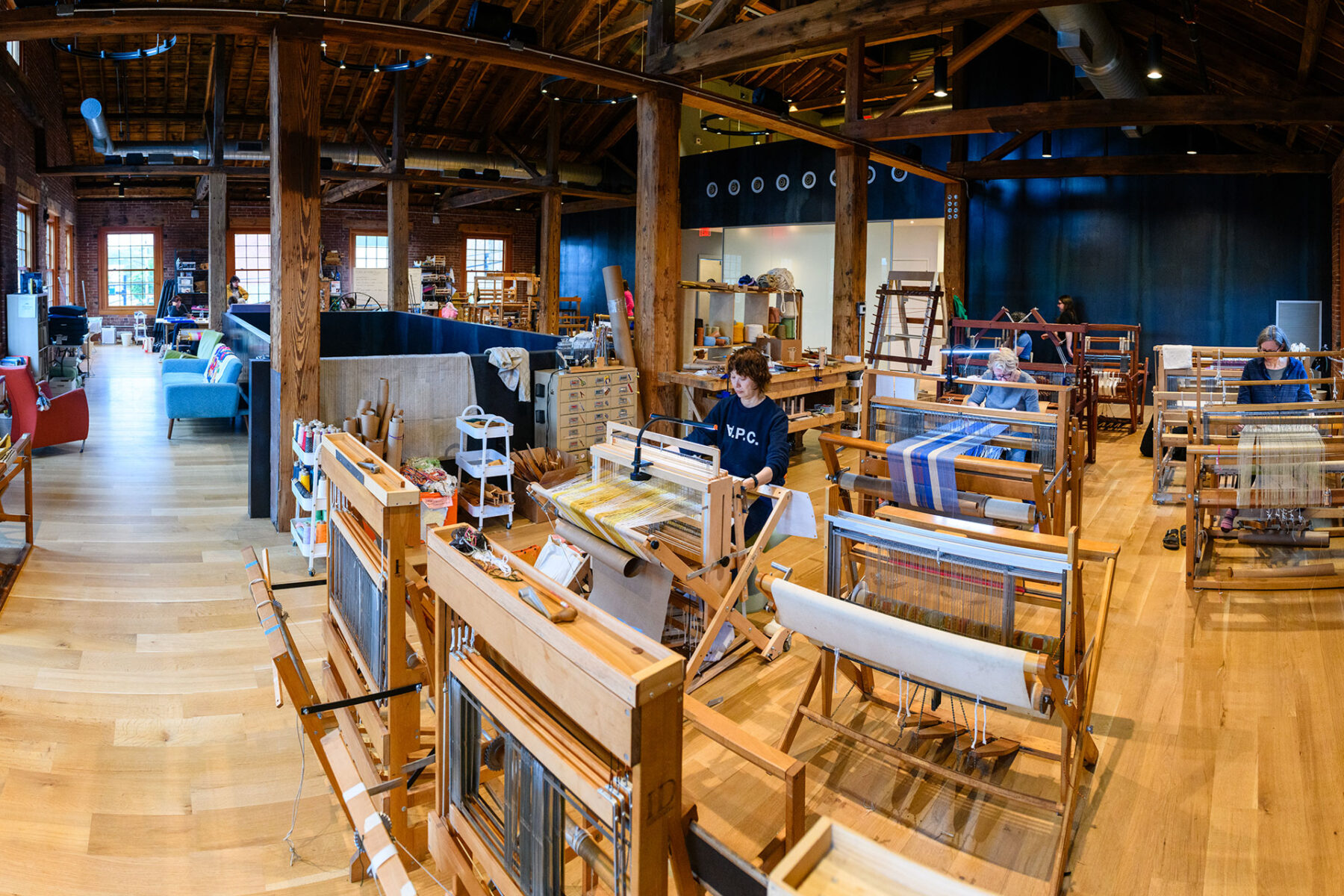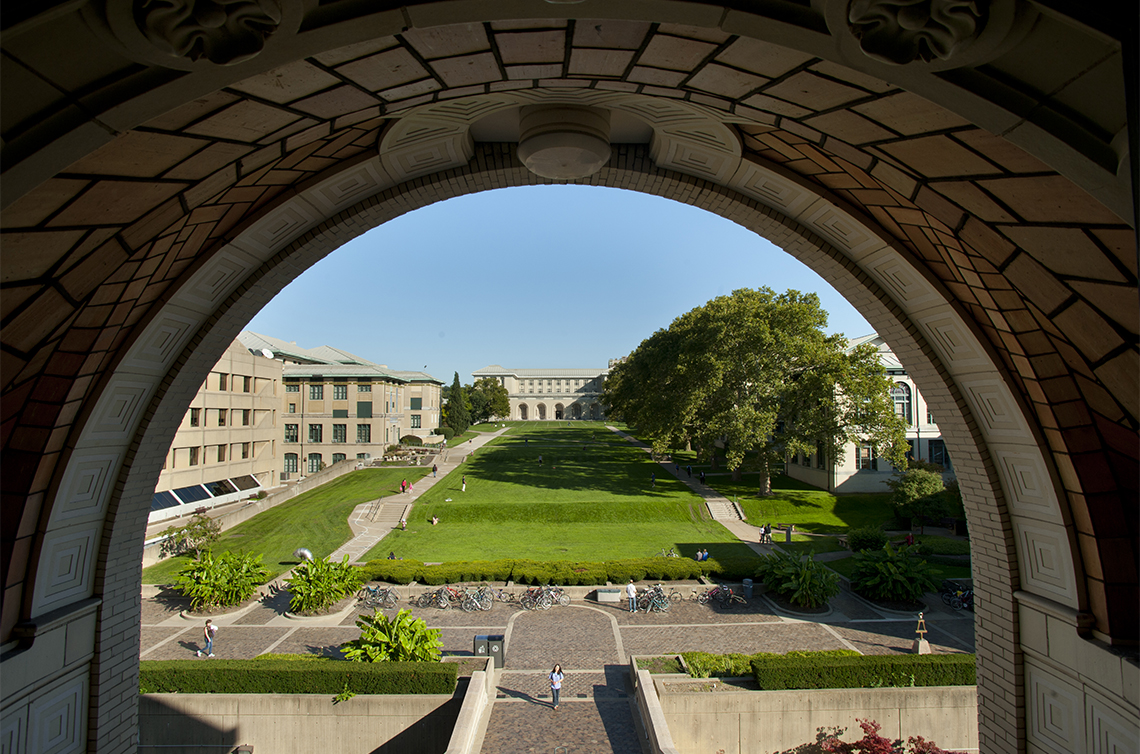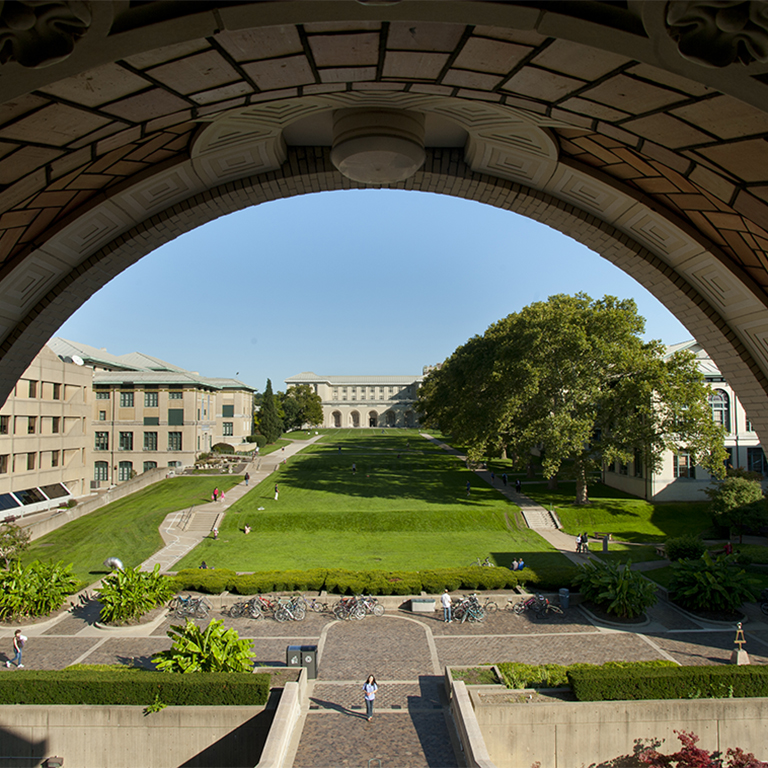
In this Q&A, Boyle shares how fiber arts open up interdisciplinary conversations by inviting students to explore weaving as both a material practice and a way of thinking.
This semester, CMU Art students have the chance to explore weaving at Contemporary Craft, where Adjunct Professor Jamie Boyle is teaching an introduction course each Friday. Boyle, who originally came to Contemporary Craft as an artist in residence and now serves as the Fibers Program Manager, will lead students in the newly expanded Fibers Studio Loft across the street from CC’s main facility. Students are learning the mechanics of multi-harness floor looms while exploring weaving’s histories, meanings, and possibilities. For Boyle, weaving can become many things — the source of a poem, the creation of community, the substrate of a painting, a garment, a sculptural form, an image, and beyond — making the class both a technical introduction and an open invitation for students to make the studio their own.
How did you first find your way into weaving?
Jamie Boyle: I came to weaving in a really unconventional way. I worked for an artist named Ann Hamilton, and I got a technical education about fibers and textile processes from her, but we never sat at a thing called a loom — her studio was a loom. When I moved to New York, I took a class to learn how to use a floor loom, and everything about it clicked for me. I love the actual process of putting yarn on the loom, planning, and the engineering involved. I also have a dance and performance background, so the process of weaving on the floor loom can be very full-bodied. Even though I’ve become a literal weaver, I carry forward what my mentor taught me, which has really expanded outside of what cloth and weaving is.
For students who may not have any background in fibers, what will this class look like?
JB: With the CMU students, I don’t know what their practices are yet, which is exciting. I do have a curriculum set up, but it’s very straightforward — part of our time will be learning to put yarn on the loom, but I hope we offer space for them to expand what those things mean. There are so many different ways into weaving, and I think weaving, fiber, and cloth can connect to students in literal or metaphorical ways.
How do you see weaving and technology connecting?
JB: Weaving is a path of over-under. Some people expand that thinking to the ones and zeros — the Jacquard loom was the first proto-computer. CMU has a Jacquard loom in the Textiles Lab, and there are people in computer science and human-computer interaction who are thinking through weaving and craft. For me, weaving in technology isn’t so much about the complexity of pattern, but the physicality of it. Taking computational ideas and making them physical and embodied is really special and important.



Contemporary Craft recently expanded. What has that meant for the fibers program?
JB: The expansion to the building across the street has been incredible. There is space for everything, and the fibers loft is an open space where we can accommodate two classes at once. The space is gorgeous, with lots of beautiful daylight. We also have a dye lab and a dedicated paper studio. The expansion literally expanded our potential and our space. Now we can really support classes with the facility and connect things full circle. CMU students have the full fibers loft for their access. I want them to feel like the space is really theirs. There might be an artist in residence using the space at the same time, but it’ll be very quiet, and they’ll really have full use of the space.
Students will be working on brand-new looms this semester — what makes them special?
JB: The School of Art purchased 10 looms that live at Contemporary Craft. Already, this partnership is allowing us to offer workshops we couldn’t have before. In a very practical sense, these are really great looms. They fold up and are on casters, so they’re very movable. Otherwise, a loom can take up a lot of space. The space we were in at the original building had to be multiple things all the time. So we had to squish all the looms to one corner in order to accommodate a sewing classes or something. It was just a constant game of making it work. We’d really outgrown that studio. This loft studio and new looms really expands our programming.
What are you most excited about as this class gets underway?
JB: I’m just really, truly excited for the students. I think this is an awesome opportunity for all of us, and I’m excited for the students to make the studio their own when they’re here on Fridays and outside of that, if they’re interested. I’m really curious what’s going to happen, and I think the students will drive how it all unfolds.
Photos by Nathan Shaulis




